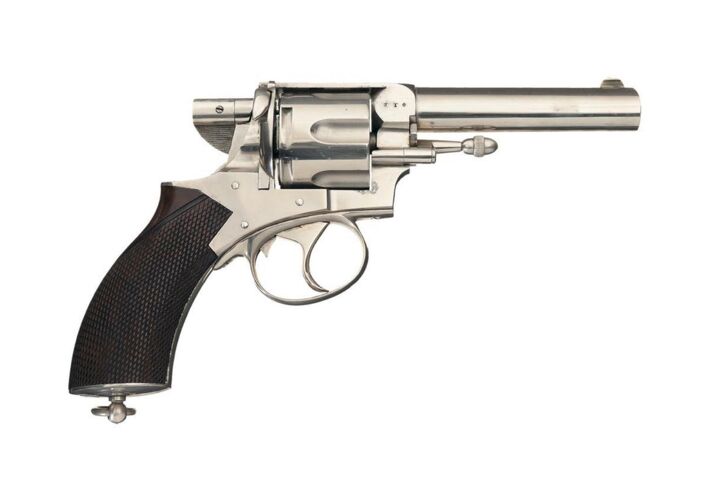When it comes to revolvers, let’s face it: nothing results in a faster reload than Jerry Miculek with a swing-out cylinder and speed loaders. There have been many attempts in the past, however, to take one time-consuming step out of the revolver’s manual of arms: ejecting fired cases. One method was top or bottom break revolvers which would kick out the cases as you opened them. Though referred to as “automatic ejection revolvers”, we will be looking at a different type of automatic ejection today.
Unusual Revolvers @ TFB:
- Standard Manufacturing SWITCH-GUN Folding Revolver
- Wheelgun Wednesday: The 18-Shot Revolver of Maximilian I of Mexico
- Standard Manufacturing S333 VOLLEYFIRE Double Barrel Revolver
- Wheelgun Wednesday: 5 Unusual Wheelguns Seen in May 2020 MORPHY Auction Catalog
For the purposes of this article, we will be looking at revolvers that would mechanically eject individual cases during the firing process. As recently as the mid-twentieth century, Colt made a prototype direct-gas ejection revolver that ejected all but the last case. Of course, this was a failure as one still needed to swing out the cylinder and eject the last case. This was not, however, the only auto-ejecting revolver the world has ever seen.
Von Steiger
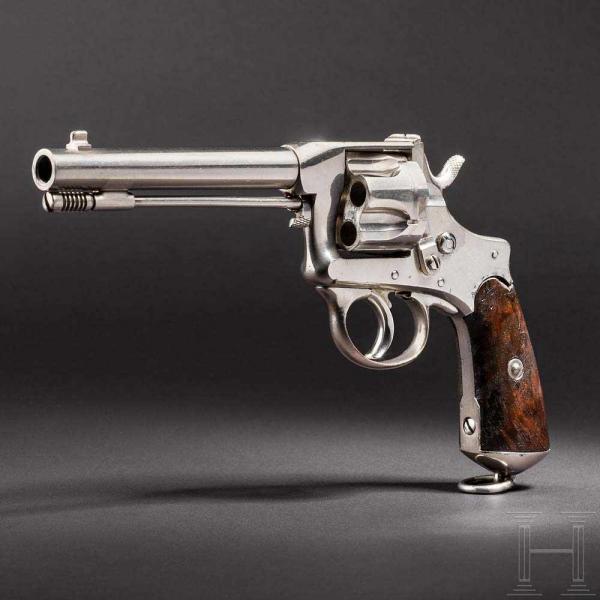
Von Steiger automatic ejection revolver. Photo Credit: AuctionFR
If a company came out with an automatic ejecting 10mm revolver (well, 10.4mm) at SHOT 2022, I’m sure they would get a lot of press. This is actually what a Swiss firearms firm, Von Steiger, offered back in the late 19th century for Swiss Army trials. Von Steiger revolver’s automatic ejection was via a small ejector that would fit under the cartridge rim on the right of the cylinder. When the trigger was pulled, it would move rearwards and eject the case. Early Von Steigers were no doubt unpleasant to shoot, as they ejected straight back towards the shooter. This was initially solved via a brass deflector attached to the frame, and in later versions, a deep ejection channel would guide the brass away from one’s face.
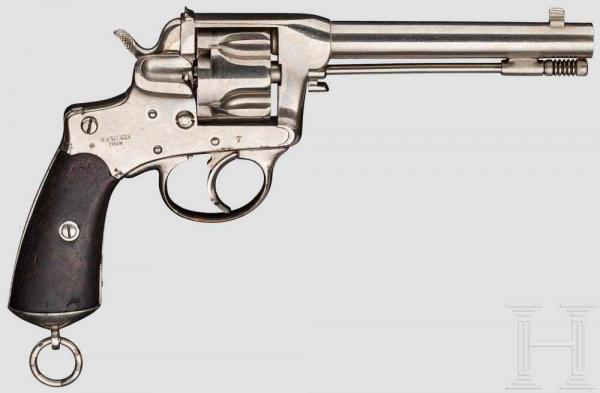
10.4mm Von Steiger Automatic ejection revolver. Photo Credit: AuctionFR
Webley Automatic Ejection
Webley’s automatic ejection came about in the 1880s from the custom firm of Silver and Fletcher. Silver and Fletcher developed a system for Webley RIC solid frame revolvers that used a spring-loaded ejection lever. The lever would fling cartridges backward out of the cylinder (also towards the shooter’s face) when the loading gate was moved out of the way.
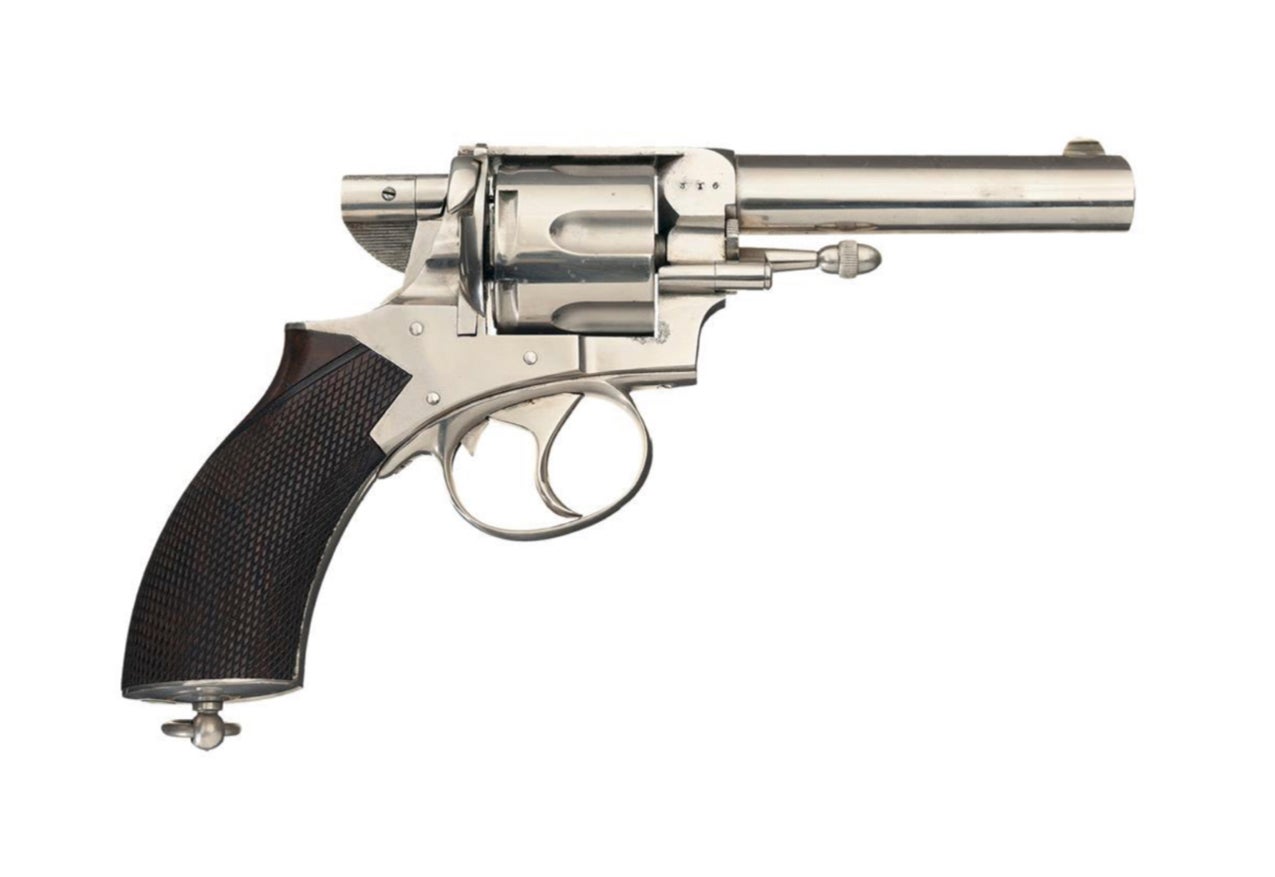
Webley & Scott Auto ejection RIC Revolver. Photo credit: Rock Island Auction
You could use the system when firing live rounds, or pull the trigger six times to swiftly unload the Webley RIC. A hammer modification was made so that one could retract the firing pin by rotating the hammer 90 degrees, letting you unload a cylinder either partially or fully loaded with live cartridges, all while pulling the trigger to actuate the unloading system. I give this system great credit for being a significant speed improvement over the reloading process of unmodified Webley RIC type revolvers.
Ronge
Though very interesting for its DA/SA characteristics more commonly seen in semiautomatic pistols, this particular automatically ejecting revolver would put some brass in your eye for sure, along with the unburnt powder and other nasty possibilities. An eight-shot revolver chambered in 6.35mm/25 ACP, the Ronge had an enlarged opening directly where the hammer would contact the cylinder.
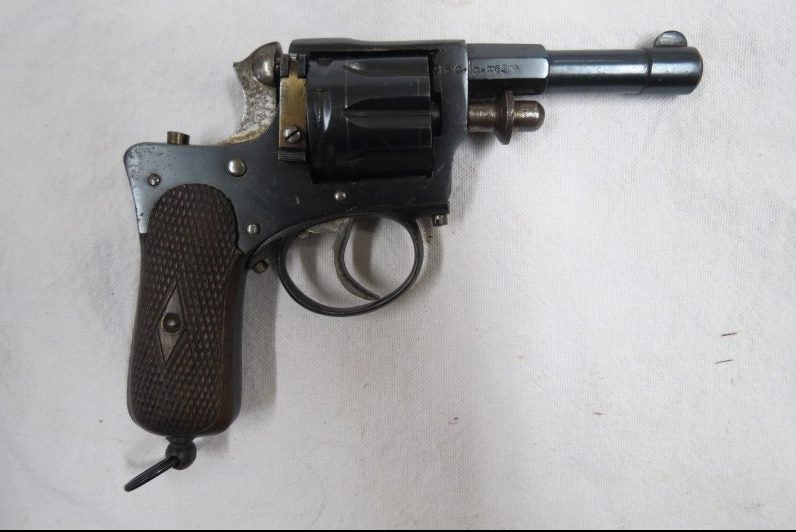
Ronge .25ACP eight-shot auto ejection revolver. Photo Credit: AzurearmsFR
The frame’s awkward shape allows the hammer to travel back further than normal. When the cartridge would be hit by the hammer, the hammer would move back under recoil and gas pressure and crash against a ball stop. The empty case would then come out of the frame directly back towards the shooter’s face before the next shot was fired. How do you think that would affect your sight picture? Fine for shooting from retention, I suppose.
A failed endeavor
Though various iterations of these revolvers continued to pop up through the ages, and this is no exhaustive list of auto-ejecting revolvers, most of them weren’t too successful. Arguably, the upgraded Webley RICs would provide the best functional improvement, as they were far faster to unload than a normal RIC. However, none of these methods are more practical than unloading a top-break, a swing-out cylinder, or a reasonably well-designed magazine-fed pistol. Nevertheless, they represent a neat and somewhat unknown branch of firearms development.
(For cool videos of some of these weird wheel guns in action, check out Forgotten Weapons)
 Your Privacy Choices
Your Privacy Choices
